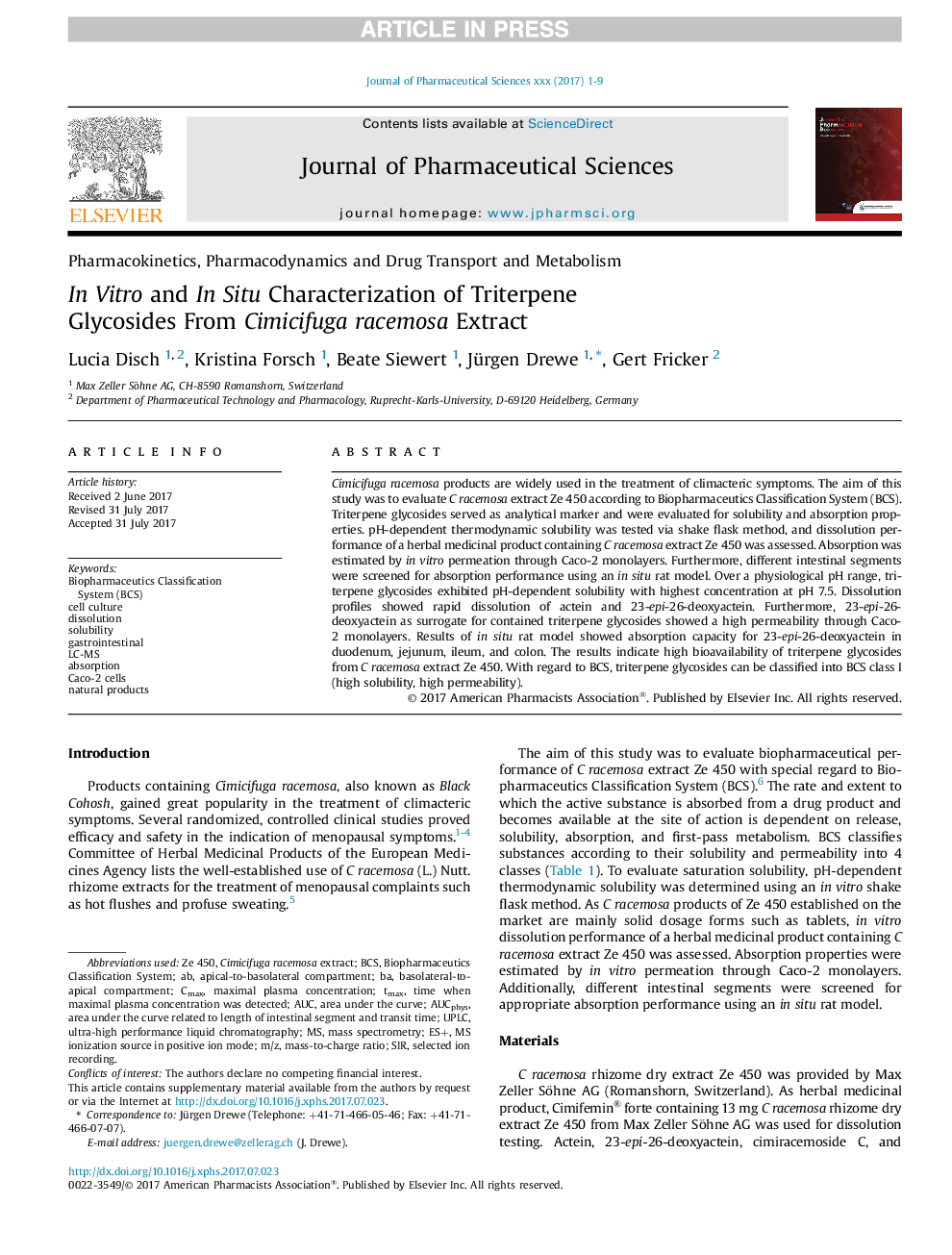| Article ID | Journal | Published Year | Pages | File Type |
|---|---|---|---|---|
| 8513718 | Journal of Pharmaceutical Sciences | 2017 | 9 Pages |
Abstract
Cimicifuga racemosa products are widely used in the treatment of climacteric symptoms. The aim of this study was to evaluate C racemosa extract Ze 450 according to Biopharmaceutics Classification System (BCS). Triterpene glycosides served as analytical marker and were evaluated for solubility and absorption properties. pH-dependent thermodynamic solubility was tested via shake flask method, and dissolution performance of a herbal medicinal product containing C racemosa extract Ze 450 was assessed. Absorption was estimated by in vitro permeation through Caco-2 monolayers. Furthermore, different intestinal segments were screened for absorption performance using an in situ rat model. Over a physiological pH range, triterpene glycosides exhibited pH-dependent solubility with highest concentration at pH 7.5. Dissolution profiles showed rapid dissolution of actein and 23-epi-26-deoxyactein. Furthermore, 23-epi-26-deoxyactein as surrogate for contained triterpene glycosides showed a high permeability through Caco-2 monolayers. Results of in situ rat model showed absorption capacity for 23-epi-26-deoxyactein in duodenum, jejunum, ileum, and colon. The results indicate high bioavailability of triterpene glycosides from C racemosa extract Ze 450. With regard to BCS, triterpene glycosides can be classified into BCS class I (high solubility, high permeability).
Keywords
CmaxtmaxLC-MSUPLCSIRAUCm/zDissolutionSolubilityAbsorptionmaximal plasma concentrationGastrointestinalBCsCaco-2 cellsbiopharmaceutics classification systemselected ion recordingMass spectrometryNatural productsarea under the curveMass-to-charge ratioUltra-high performance liquid chromatographyCell culture
Related Topics
Health Sciences
Pharmacology, Toxicology and Pharmaceutical Science
Drug Discovery
Authors
Lucia Disch, Kristina Forsch, Beate Siewert, Jürgen Drewe, Gert Fricker,
